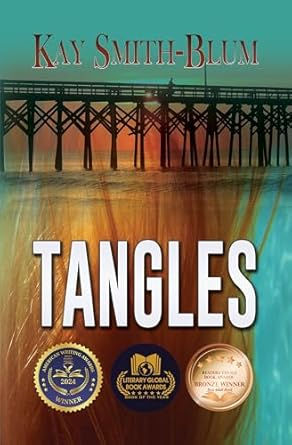NUCLEAR FICTION NEWSLETTER, #12
- lschover
- Aug 16
- 3 min read
My Favorite Manhattan Project Novels

As I wrote my novel, Fission: A Novel of Atomic Heartbreak, I began to search for other novels set in or adjacent to the Manhattan Project. I have not yet read all of them, but I found twenty-one, including a couple of works of young adult fiction. In a previous Nuclear Fiction Newsletter (Issue #8 on the postwar guilt trope in this genre), I mentioned how much I liked Benjamin Labatut’s literary fiction book, The Maniac (2023). Today I’d like to review a couple of other favorites.
Atomic Love (2020) by Jennie Fields is definitely my favorite among the women’s fiction (now, better known as “book club”) novels, although I think some might also classify it as literary fiction. I admire the deep and complex characterization, skillful evocation of time and place (Chicago in the Cold War 1950s), and a plot that keeps the reader guessing as long as possible. The heroine, Rosalind Porter, is modeled loosely on the very few female physicists who contributed to the design of the atomic bomb. When we meet her, however, she has been falsely discredited by a colleague, Weaver, with whom she fell deeply in love. After he turns on her, and in her regret about being part of creating the bomb, she circumscribes her life to selling estate jewelry at a department store. Enter the charismatic FBI agent Szydlo, humiliated and damaged by his experiences as a POW in the Pacific. He needs Rosalind’s help to determine if Weaver is an atomic spy for the Soviets. But to get answers, Rosalind must let Weaver, now penitent, back into her life. No more spoilers. I like my own novel, but damn, I wish I could write like Jennie!

I recently read Tangles (Kay Smith-Blum, 2024), a novel about the radiation contamination at the Hanford Plant that produced plutonium, during and after World War II. The author uses multiple points of view to connect the stories of Mary, a young secretary with an abusive husband; the family that lives next door (including a brave wife who mothers Mary and a teenage son Luke who adores Mary); and Luke as a grown scientist, trying to reveal the unconscionable radiation exposures around the plant as well as battling his own, consequent thyroid cancer. The book has a unique voice and is well-researched. Many people believe the superfund cleanup of Hanford has been successful, but this novel (and my conversation with Kay) highlights ongoing dangers from the long years of plutonium production. Given the accelerating production of nuclear weapons, this is a story we all need to hear. I was absorbed by Tangles’ twisty plot, but I think I only fully connected the dots on my second read!

One of the most unique novels is The Wives of Los Alamos (2014) by TaraShea Nesbitt, a who teaches creative writing and has a Substack. She writes in the present, collective first person, as “we.” Using this innovative method, she presents multiple women’s thoughts and feelings, some in agreement and some differing. Chapters are organized by issues or time periods of the Manhattan Project. Although she clearly has read personal accounts from oral histories and books, her characters do not use real names of women who were in Los Alamos with their husbands. Oppenheimer is called The Director and Groves, The General. One of the pleasures of reading The Wives of Los Alamos is the prose. In fact, the whole novel reads like a long, epic prose poem. Again, I enjoyed it most the second time I read it, which was also after I had immersed myself in the history of the Manhattan Project.








Comments